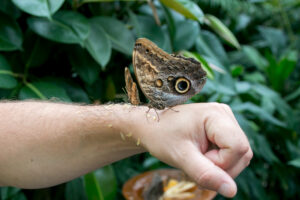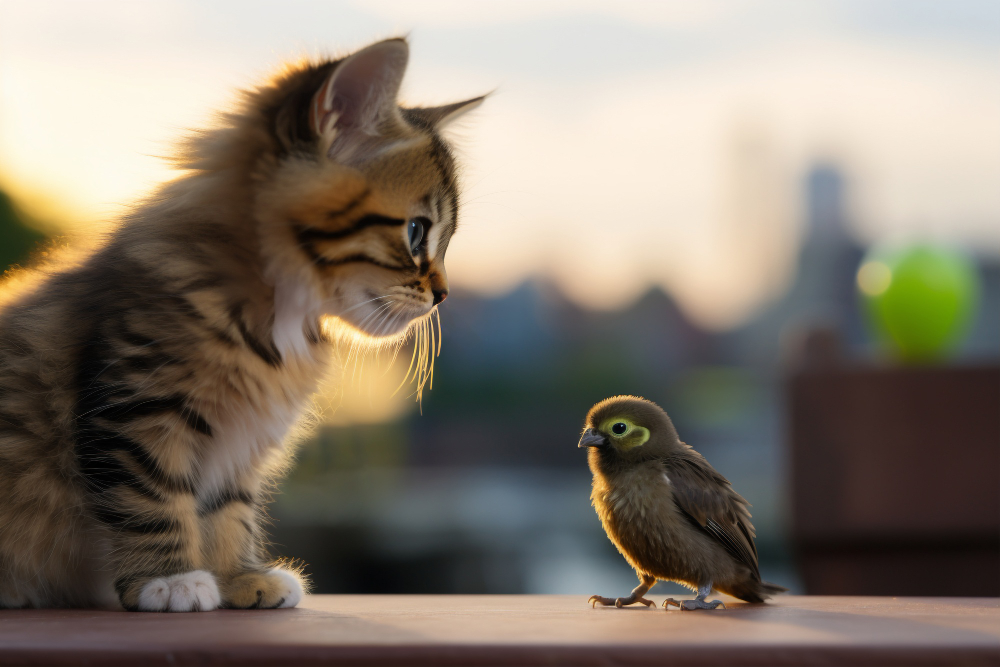Birdwatching enthusiasts and even those who love wild bird feeders are aware of the thrill that birds bring to a yard. One unwanted pestilence, however, can mar this experience: moths in the bird seed. While not nearly as big a nuisance to birdseed per se, they also invade stored seeds and grains, damaging them. This article will give you a comprehensive guide on how to keep moths out from bird seed naturally, to ensure that your feathered visitors are happy and healthy.
Introduction to Moths and Bird Seed
Probably the worst nuisance that moth species, including the Indian meal moth, or other pantries bugs cause to owners of bird seed is that they infest the bags of birdseed, lay eggs, and their larvae will feed on the seeds, causing contamination and waste. Thus, stopping moth infestations will greatly help preserve the integrity of bird food and provide a healthy feeding condition for your visitors.

Why Moths Are Attracted to Bird Seed
Birds attract moths to their seed for various reasons:
Source of Food
Birdseed is rich in grains, seeds, and nuts, which are some of the main draws for moths. If these pests find food sources in the carbohydrates and proteins found in birdseed, it provides an excellent breeding ground.
Warmth and Humidity
Moths prefer the warm, humid conditions for reproduction. Bird seed, mainly if it has been in an unsealed container, can be easily damp and warm and cozy for moths.
Low Storage
Moisture-rich birdseed that has become damp due to poor storage has served as an ideal ground for moths. Empty or otherwise inappropriate storage of birdseed bags allow the easy entry of moths and then lay eggs.
Find Moths and Lifecycle
In order to effectively control moths, one needs to understand what he or she is dealing with.
Species of Moths
Indian Meal Moth
The adult Indian meal moth is very easily recognizable, measuring about half an inch in length. The upper forewings are reddish-brown.
Flour Moth
This insect is almost identical in form to the Indian meal moth but is another extremely common infesting stored grains and seeds.
Life Cycle of Moths
Egg Stage: The moths lay the tiny eggs on or around food source. These eggs hatch to emerge as larvae in a period of a week.
Larval Stage: These larvae look like small, white caterpillars and feed on the bird seed for weeks, increasing and shedding skin several times
Pupal Stage: They spin a cocoon after feeding, which induces the pupal stage for about 10 to 14 days.
Adult Stage: The adult moth emerges from the cocoon for laying eggs and to complete the cycle.
Natural Remedies
With regards to prevention, there are lots of ways through which you can ensure no moths infest your bird seed:
Bay Leaves
Bay leaves have an awesome and natural ability repel insects. Add dried bay leaves in your bird seed container, and get rid of those annoying moths and other pests.
Incorporate Herbs and Spices
Certain herbs and spices can be applied as natural repellents, such as rosemary, thyme, and lavender. Dry herbs can be applied inside the storage area of your birdseed to repel moths.
Vacuum Frequently
Vacuuming the area where you store the bird seed regularly is an effective method for removing eggs or larvae on the surface. More importantly, pay attention to all the corners and crevices of your storage area.
4. Diatomaceous Earth
This is a powdered form of fossilized algae. Moths get killed by this powder when they come into contact with it. You can sprinkle the powder on the bird seed in the storage room to repel the moths.
Diatomaceous earth is a natural powder, the fossil of algae. Sprinkle an undetectable amount in and around your bird seed storage to help kill larvae and deter adult moths, without harming your birds.
5. Keep Them Out: Proper Storage Techniques
Proper storage is the key to preventing moth infestations:
1. Seal Containers Tightly
Store bird seed in tightly sealed airtight containers so moths cannot get into the food.
2. Store Bird Seed in an Air Conditioned Dry Place
Store your bird seed in a cool, dry condition. Warm and humid conditions should be avoided because it will attract moths.
3. Original Packaging Tips
If you really want to store the bird seed in its original packaging, ensure it is sealed tight. Alternatively, move them in airtight containers for extra protection.
6. Cleaning and Maintenance Tips
For preventing moths from arriving, keep the feeding area clean:
1. Clean bird feeders regularly
Birds spill some of the seeds they feed on from their feeders in general. Drain the water and apply a solution of water and vinegar to eliminate eggs and larvae and disinfect them.
2.Toss Away Old Seed
If the bird seed is old or infested, then you must remove it safely. Clean up the storage area after removing the old seed to prevent further problems.
3. Check New Seed Supplies
Once you get new seed for your storage make sure to check the packing bags and containers for signs of damage or infestation. Do not buy and use seed that shows signs of damage or infestation.
7. Functions of Essential Oils
Essential oils might repel moths organically and fragrantly. The most effective oils against moths would be the following:
1. Peppermint oil
that can repel moths with its pungent smell might suffice. Some drops added to a bowl of water and sprayed around the storage area will work well.
2. Clove oil
Another natural repellent is clove oil. Like peppermint oil, use this to repel moths and other insects.
3. Cedarwood Oil
Cedarwood has been used for years for moth-repelling purposes. Add cedar chips or cedar oil into your storage facilities to prevent moth infestations.
FAQs About Moth Prevention in Bird Seed
How do you know that your bird seed has been infested by moths?
The presence of moths in or near the seed shows webbing, larvae, or adult moths. You may also notice a marked decline in seed quality.
Can I still feed birds if I find moths in their seed?
You can remove the moths and larvae, but it is better to replace the infested seed so that you can ensure the health of the birds.
How frequently should I clean my bird feeders?
Clean bird feeders should be at least once a month or more, provided you notice spills, bee nest, or apparent infestation.
Is diatomaceous earth safe for birds?
Yes, food-grade diatomaceous earth is bird safe. Nevertheless, when applying the same, avoid its dust and keep it away from feeding areas.
How could I avoid moths when buying bird seed?
Check the pack for holes or tears and do not source from stores with poor inventory turns because older stock is much more likely to be infested.
What am I supposed to do if I feel that my bird seed has some infestation?
When you suspect an infestation, discard the affected seed and clean the storage area properly. Use natural repellents next time you store.
SUMMARY:
Simply put, prevention of moths in bird seed naturally requires understanding their behavior and being proactive in appropriate measures. With the application of natural deterrents, appropriate storage techniques, and keeping your feeding area clean, you can rest assured that your feathered friends will enjoy the quality birdseed without the nuisance of moth infestations.


